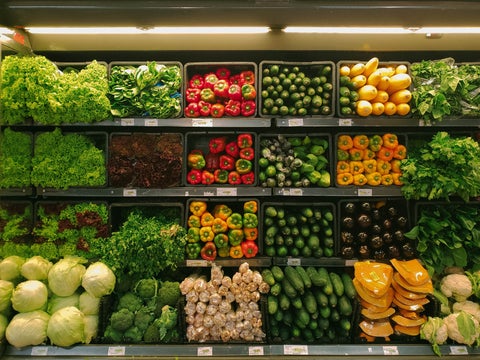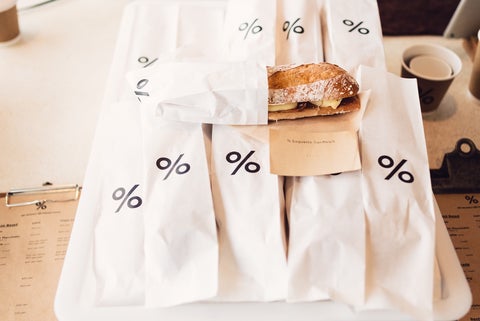Thinking About Making Your CPG Organic?
Consumer demand for organically produced goods is skyrocketing. Organic sales in the United States soared to a new high of $62 billion in 2020, jumping by a record 12.4% from the previous year.
Whilst this was partly due to higher levels of home-cooking instigated by the global pandemic, the demand for healthy options is here to stay.
An organic label is a massive bonus in the eyes of consumers, with goods perceived as healthier, more nutritious and better for the environment.

The demand is there
All this means consumers are willing to buy more and pay more for organic goods. With further growth predicted for 2021 and beyond, it’s a trend that CPGs can’t afford to ignore.
Organic CPG products are now available in 3 out of 4 grocery stores across the US and account for over 4% of all total food sales – a number that’s only increasing.
So if you’re thinking of going organic, we take a look at the key things you’ll need to consider. From what “organic” actually means, to certification standards and steps to success – including getting your organic CPG certification off to the best possible start…
What does “organic” actually mean?
The United States Department of Agriculture (USDA) states that organic produce must be grown on soil that’s had no prohibited substances applied for three years prior to harvest. Prohibited substances include GMOs, toxic chemicals, artificial flavors and preservatives, synthetic fertilizers, pesticides and more.
Animals must also have living conditions accommodating their natural behaviors (like the ability to graze on pasture), be fed 100% organic feed, and not administered antibiotics or hormones.
The USDA National Organic Standard Seal is a symbol of reliability. Consumers know that if your product boasts this claim, it will have upheld the highest standards of quality and environmental sustainability.
Organic certifications
There’s far more to getting certified as organic than just a blanket “organic” or “non-organic” label. There are five categories of organic processed food, including:
- 100% organic
- Organic
- Made with organic ingredients
- Claims only in the ingredients list
- Livestock feed
Here’s a little more detail on each…
100% Organic
Unsurprisingly, this is the most rigorous labelling category. Any organic CPG making this claim must ensure that all ingredients (other than water and salt) are certified organic.
Water and salt may not be labelled organic because they are both “naturally occurring” rather than agricultural products.
Any processing aids (for instance ascorbic acid or cornstarch) must also be certified organic or fit a strict criteria for approved nonorganic materials.
Organic
Products labeled “organic” must contain at least 95% organic ingredients.
Certain nonorganic processing aids are allowed in this instance. For example, decaffeinated coffee often can’t be “100 percent organic” (only “organic”) because nonorganic processing aids (involving soaking coffee beans in a solvent solution) are frequently used in the decaffeination process.

Made with organic ingredients
Organic CPGs making this claim must ensure products contain at least 70% organic ingredients. The limitations on processing aids and nonorganic ingredients are the same as the previous two categories.
Claims only on the ingredients list
If your product uses organic tomatoes, for instance, this could be identified on the ingredients list, but not with a USDA seal on the front of the packaging. There are no restrictions on nonorganic ingredients in these products.
Similarly, organic “livestock feed” is just applicable to the feed/forage animals are eating.
How to become certified organic
For any CPG going organic, one of the first things to do is get in touch with a USDA-approved organic certifying agent. Your agent will help you through every stage of the planning, inspection and organic licensing journey.
As part of this process, here are some of the key steps any aspiring organic CPG should take…
Managing your supply and distribution chain
Running an organic CPG means that you need to look at every part of your supply and distribution chain. If you’re going “100% organic”, every stage of your production (from farm to processing) must use organic ingredients and sustainable practices. You might need to find new suppliers or co-packers as part of this – as working with the right businesses is crucial.
Take the time to research suitable distributors for your organic CPG. There’s no point building a fantastic organic brand only to partner with suppliers and distributors who don’t share your values!
As the leading distributor of purpose-driven food and beverage brands, Buffalo Market specialize in organic foods and regenerative agriculture that’s good for consumers and good for the planet. We understand what retailers and consumers are looking for in the organic market, and help brilliant brands get products on the right shelves.
Planning for certification
To create a certified organic CPG, your business must have adopted organic practices across the entire supply chain before submitting an official application. This involves creating an organic operating plan with appropriate record-keeping and ingredient tracing – and takes a fair amount of planning!
Your certifying agent will review the application to make sure your business practices comply with regulations. This will be verified through an independent on-site inspection.
Once you’ve received your organic certification, remember this isn’t a one-off event. Your organic CPG will go through an annual review and inspection process to maintain its status.
Updating packaging design

Once you’re certain your organic certification is going ahead, it’s worth working with designers to update your packaging. You’ve gone to all this effort to create an organic CPG business, so let your customers know!
With that coveted USDA organic seal, consumers will not only understand your high standards for ingredients and production processes – but will also perceive your products as having a better nutritional profile.
We’ve already written about how great packaging design can increase your CPG sales (with re-branding exercises often resulting in triple-digit growth). But it’s important to remember that there are strict FDA regulations on food labeling – especially in relation to organic products. If you’re at all unsure, talk with your USDA agent in the first instance.
Running a certified organic CPG requires dedication and a long-term commitment to the organic process. With a bit of planning and a thorough understanding of the steps your CPG needs to take, you’ll be off to the best possible start!
Buffalo Market partners with innovative brands producing good-for-you and good-for-the-planet goods. If you’re looking for a distributor to help grow your CPG brand, get in touch today and let’s build something great.


